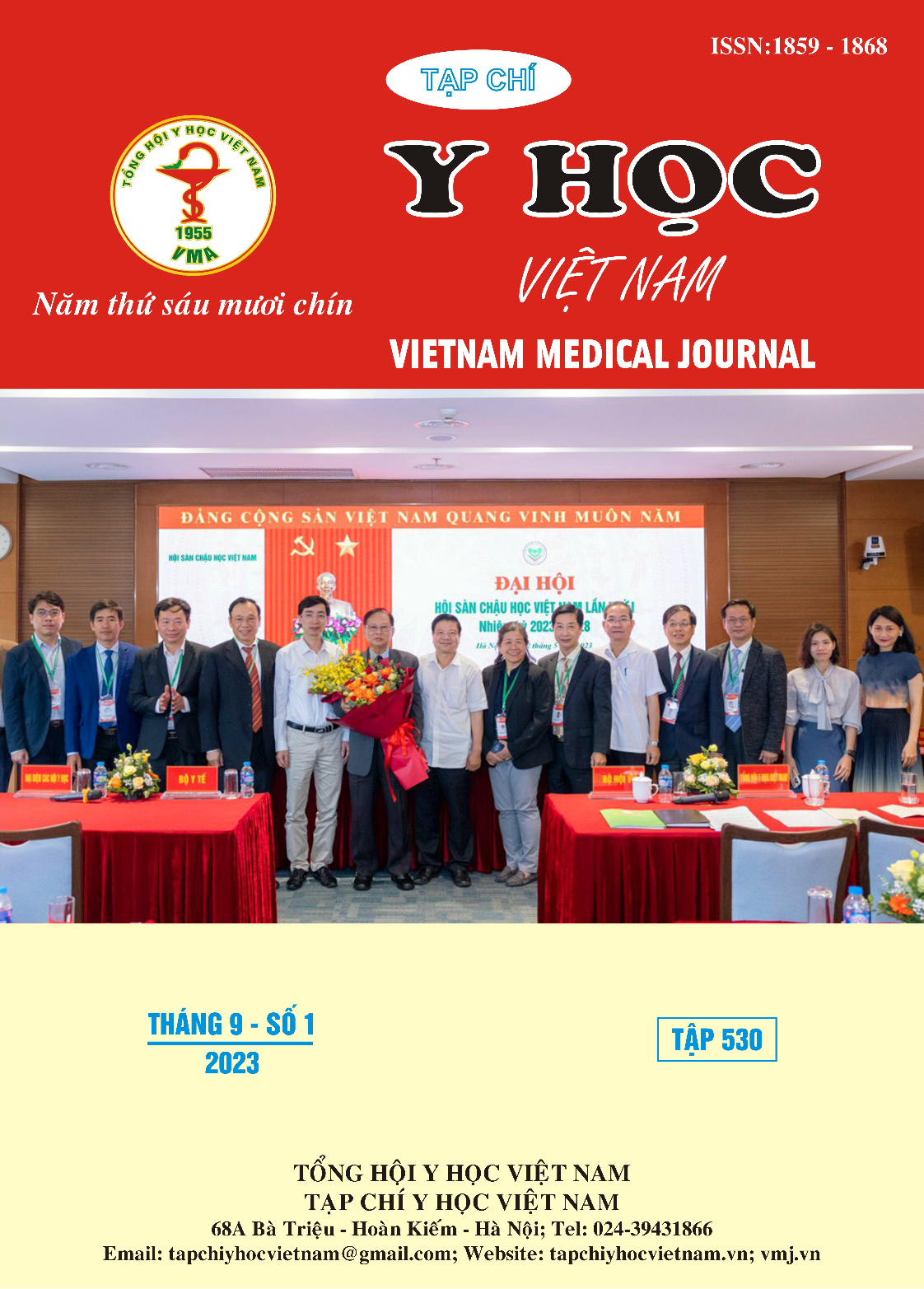PHÂN TÍCH GÁNH NẶNG BỆNH ĐÁI THÁO ĐƯỜNG TÍP 2 TẠI VIỆT NAM: NGHIÊN CỨU ĐA TRUNG TÂM TẠI MỘT SỐ BỆNH VIỆN TUYẾN QUẬN THÀNH PHỐ HỒ CHÍ MINH
Nội dung chính của bài viết
Tóm tắt
Mục tiêu: Phân tích gánh nặng của bệnh Đái tháo đường típ 2 (ĐTĐ2) theo đặc điểm lâm sàng của người bệnh tại một số bệnh viện tuyến quận thuộc Thành phố Hồ Chí Minh. Phương pháp: Nghiên cứu mô tả cắt ngang, được thực hiện thông qua hồi cứu toàn bộ dữ liệu của người bệnh ĐTĐ2 điều trị tại bệnh viện Lê Văn Thịnh và bệnh viện Quận 8, TP.HCM trong năm 2021. Đặc điểm lâm sàng của người bệnh ĐTĐ2 được phân tích theo các bệnh kèm và biến chứng của người bệnh, thông qua các chỉ số bệnh kèm theo Charlson (Charlson comorbidity index - CCI), chỉ số mức độ nghiêm trọng của biến chứng ĐTĐ (Diabetes Complication Severity Index Score - DCSI) và tỷ lệ nhiễm khuẩn tiết niệu. Gánh nặng kinh tế được tính dựa trên tổng chi phí trực tiếp y tế của dân số nghiên cứu trong một năm. Các phân tích thống kê được thực hiện bằng Phần mềm R V.4.2.2 và minh họa bằng Power BI. Kết quả: Mẫu nghiên cứu gồm 9.792 người bệnh ĐTĐ2 có BHYT, trong đó, 93,4% người bệnh có ít nhất một bệnh kèm; 54,0% người bệnh có ít nhất một biến chứng. Số người nhiễm khuẩn tiết niệu chiếm 30,4% trường hợp người bệnh ĐTĐ2 có bệnh nhiễm khuẩn. Chi phí trực tiếp y tế trung bình trong mẫu nghiên cứu là 2.338.662 (± 2.434.657) đồng/ năm. Có sự tương quan dương hoàn toàn giữa điểm CCI / điểm DCSI và tỷ lệ người bệnh nhiễm khuẩn tiết niệu (Hệ số tương quan Spearman > 0). Điểm CCI và điểm DCSI trung bình của mẫu nghiên cứu lần lượt là 3,6 (±1,6) và 0,8 (±1,0). Kết luận: ĐTĐ2 tạo ra một gánh nặng lớn trên phương diện sức khỏe lẫn kinh tế cho toàn xã hội. Các kết quả trong nghiên cứu góp phần vào việc ra quyết định phân bổ ngân sách hợp lý như hoàn thiện các phác đồ điều trị cho người bệnh ĐTĐ2.
Chi tiết bài viết
Từ khóa
gánh nặng bệnh tật, đái tháo đường típ 2, chỉ số CCI, chỉ số DCSI, Thành phố Hồ Chí Minh, bệnh viện Quận, BHYT.
Tài liệu tham khảo
2. Safiri S, Karamzad N, et al. (2022). Prevalence, deaths and disability-adjusted-life-years (dalys) due to type 2 diabetes and its attributable risk factors in 204 countries and territories, 1990-2019: results from the global burden of disease study 2019. Front Endocrinol (Lausanne). 13: 838027.
3. Nguyễn Thị Thùy Trang, Phạm Ngọc Thủy Tiên, Hoàng Thy Nhạc Vũ (2022). Phân tích chi phí trực tiếp y tế trong điều trị Đái tháo đường type 2 tại Bệnh viện Quận 8 Thành phố Hồ Chí Minh giai đoạn 2019-2021. Tạp Chí Y học Việt Nam. 514(1).
4. Hoàng Thy Nhạc Vũ, Nguyễn Đỗ Hồng Nhung, Lê Phước Thành Nhân, Trần Văn Khanh (2022). Phân tích chi phí trực tiếp y tế trong điều trị Đái tháo đường típ 2 cho người bệnh có Bảo hiểm y tế tại Bệnh viện Lê Văn Thịnh năm 2021. Tạp Chí Y học Việt Nam, 519(1).
5. Nguyễn Thị Anh Thư, Phùng Đức Nhật, Tô Hoàng Linh (2021). Chi phí điều trị nội trú của người bệnh đái tháo đường típ 2 tại Bệnh viện Quận 6 Tp.HCM. Tạp chí Nghiên cứu Y học. 142 (6), tr. 119-125.
6. Tuan Kiet Pham H, Tuyet Mai Kieu T, et al. (2020). Direct medical costs of diabetes and its complications in Vietnam: A national health insurance database study. Diabetes Res Clin Pract. 162: 108051.
7. Park S, Kario K, et al. (2016). Target blood pressure in patients with Diabetes: asian Perspective. Yonsei Med J. 57: 1307–11.
8. Young BA, Lin E, et al. (2008). Diabetes complications severity index and risk of mortality, hospitalization, and healthcare utilization. Am J Manag Care. 14: 15–23.
9. Meyers JL, Parasuraman S, et al. (2014). The high-cost, type 2 diabetes mellitus patient: an analysis of managed care administrative data. Arch Public Health. 72(1):6.
10. Conwell LJ, Cohen JW (2002). Characteristics of people with high medical expenses in the U.S. civilian noninstitutionalized population. Statistical Brief. 73: 2005.


